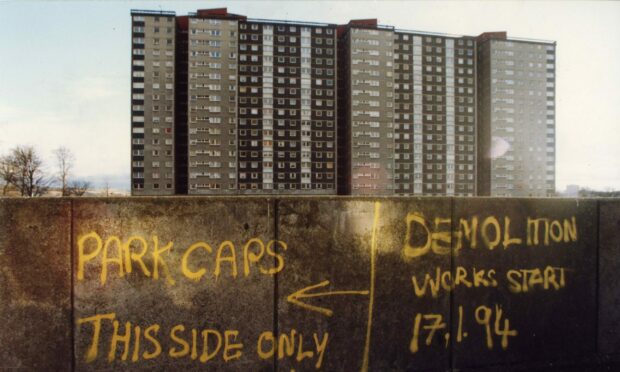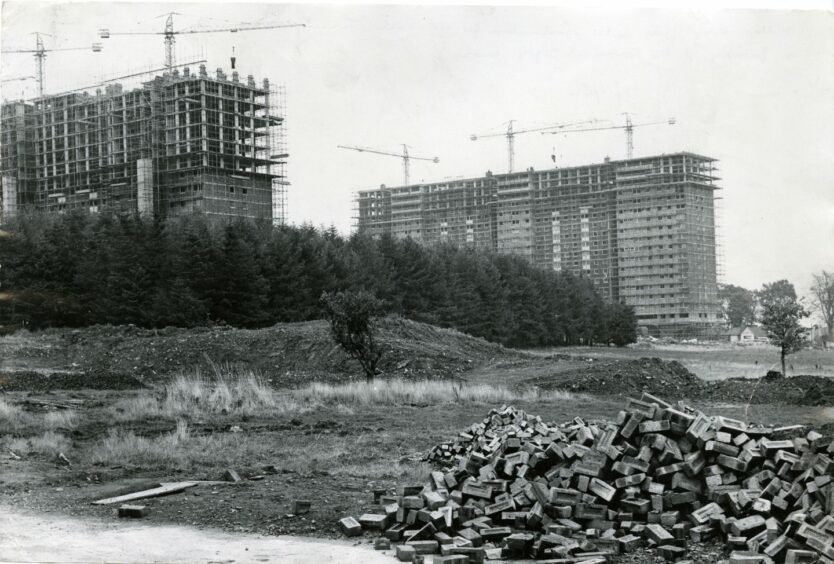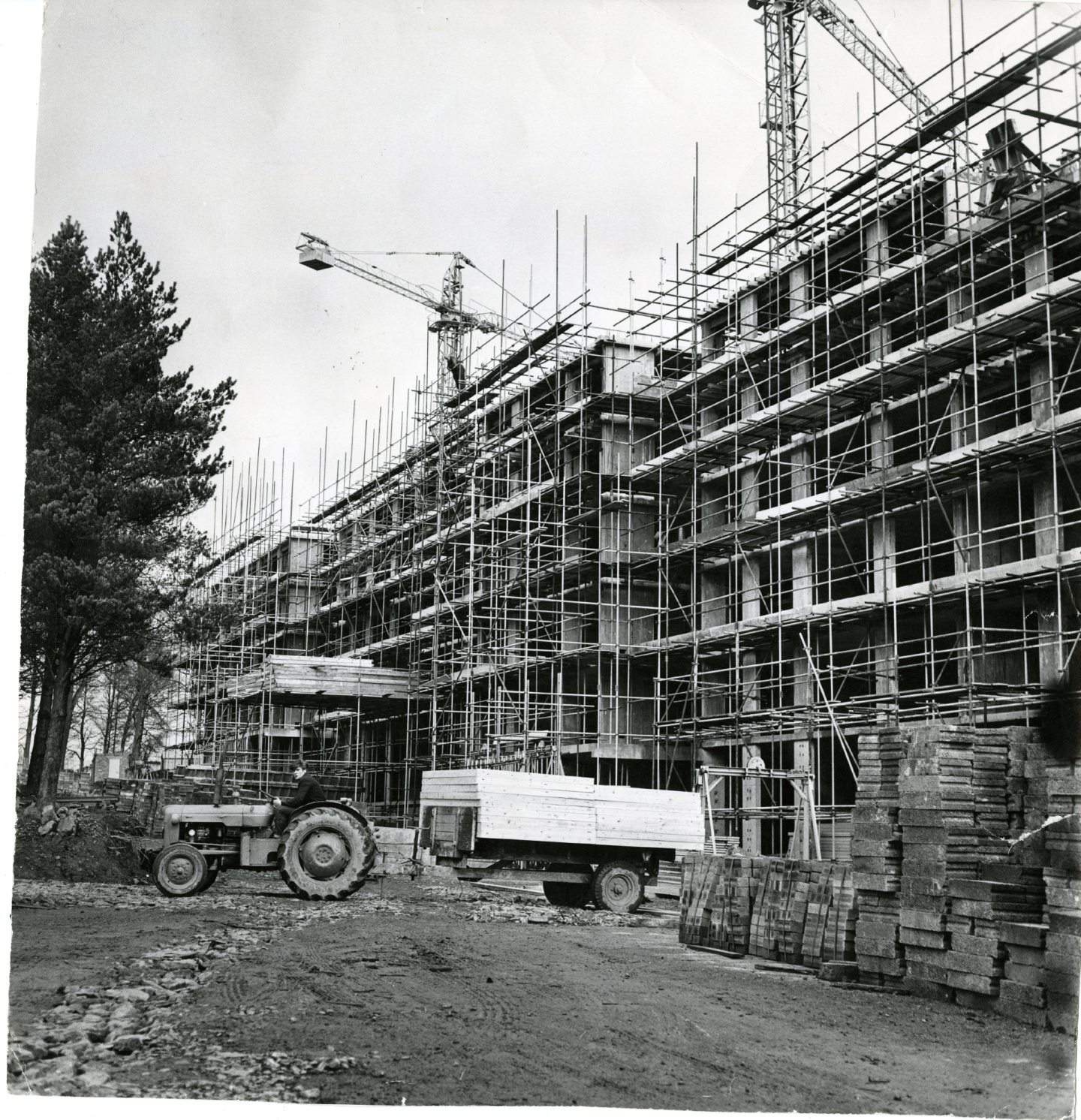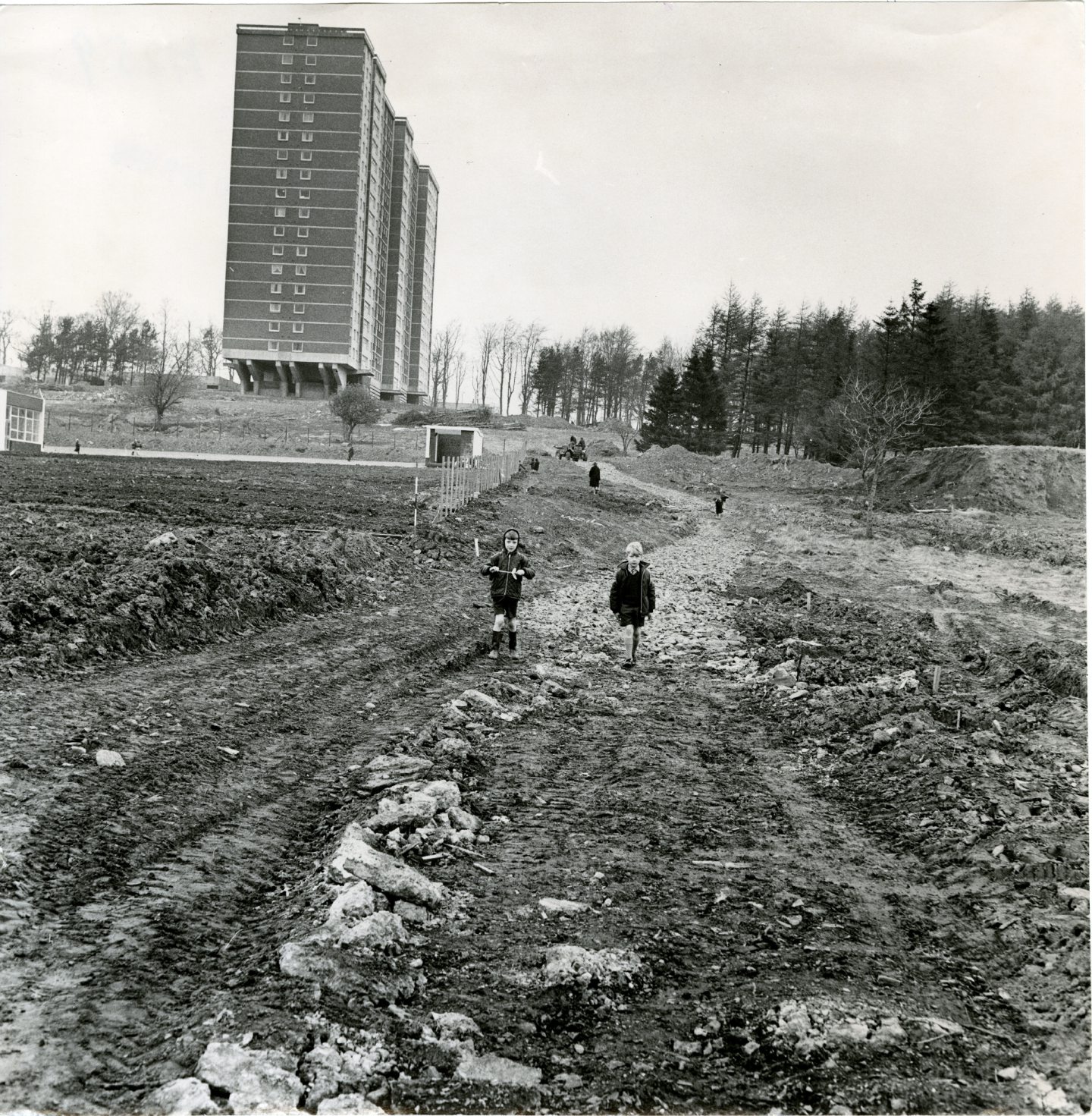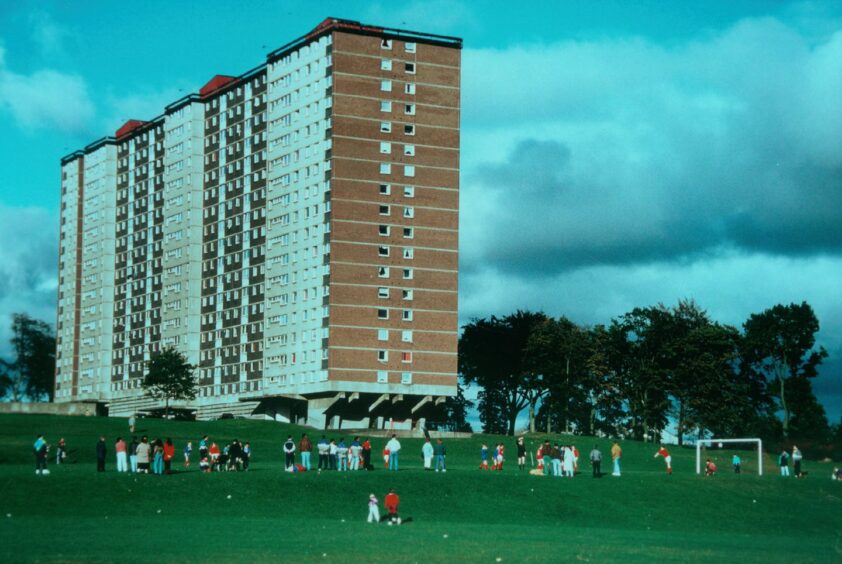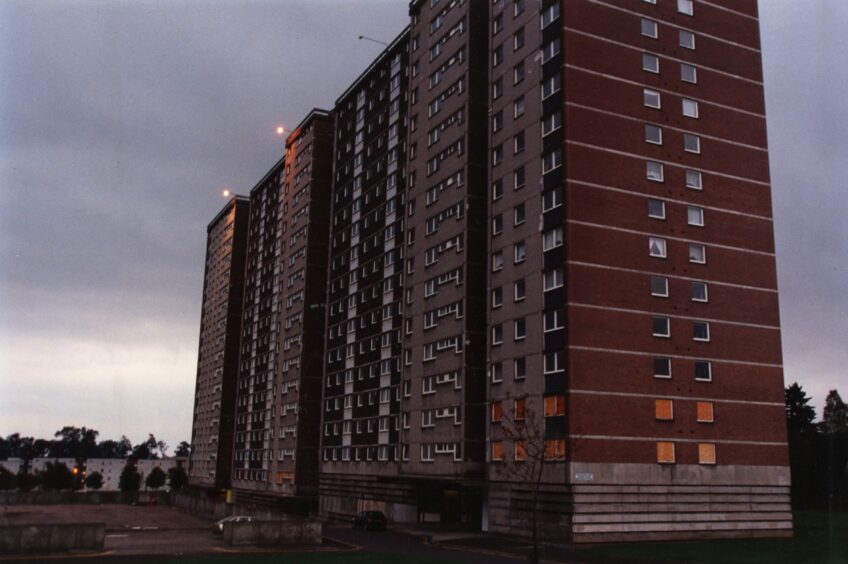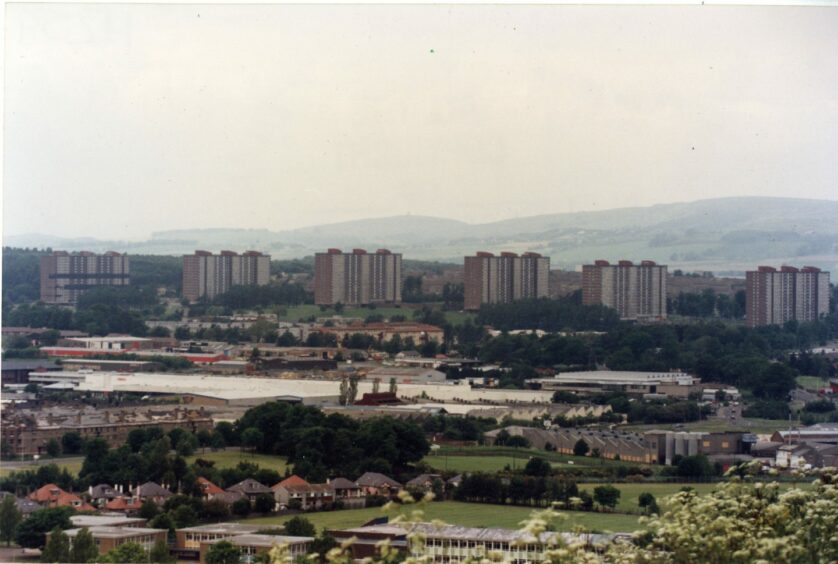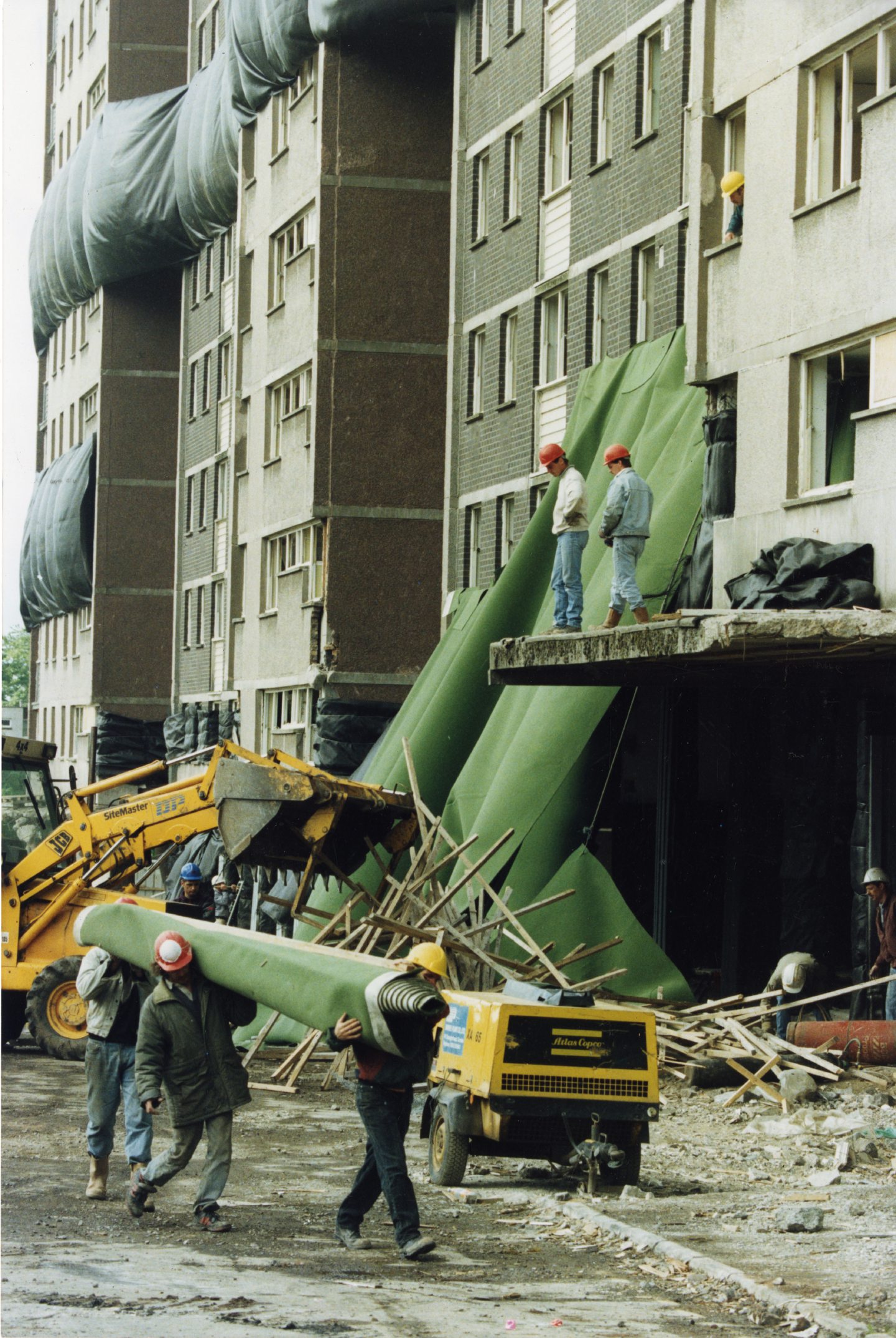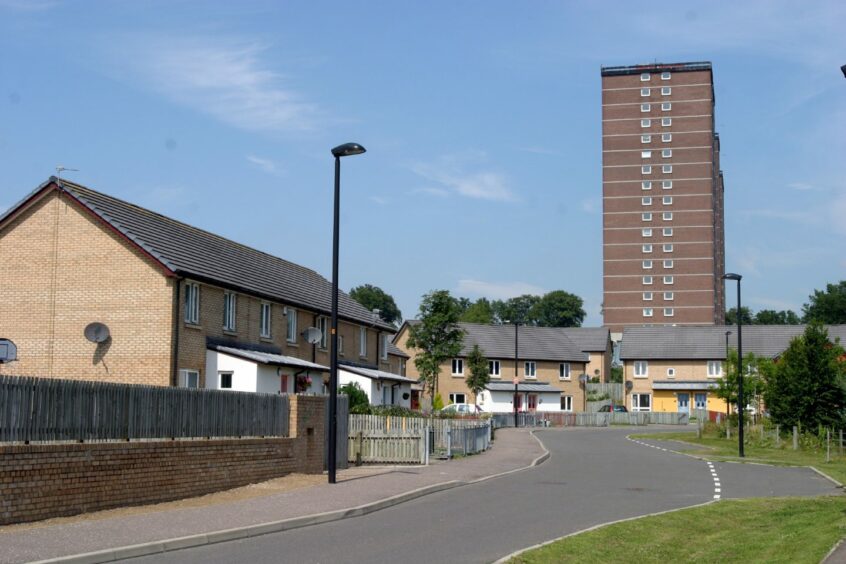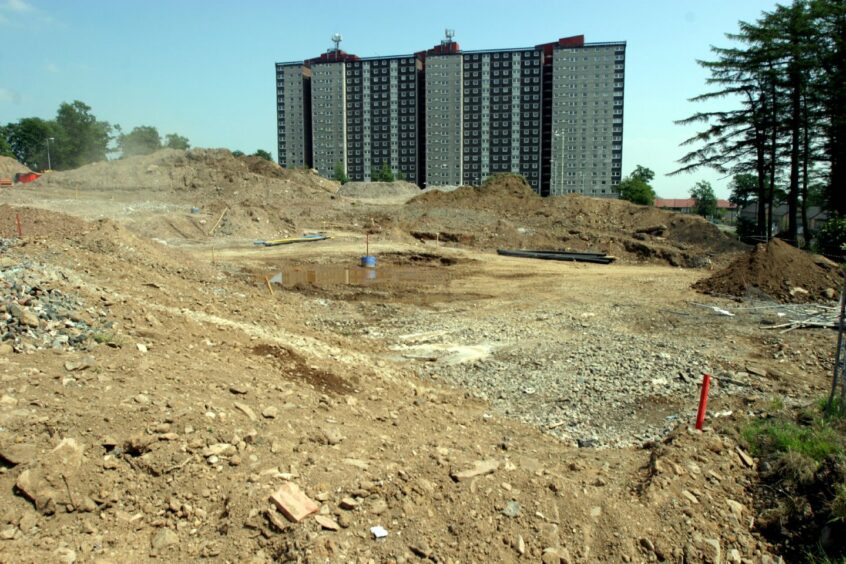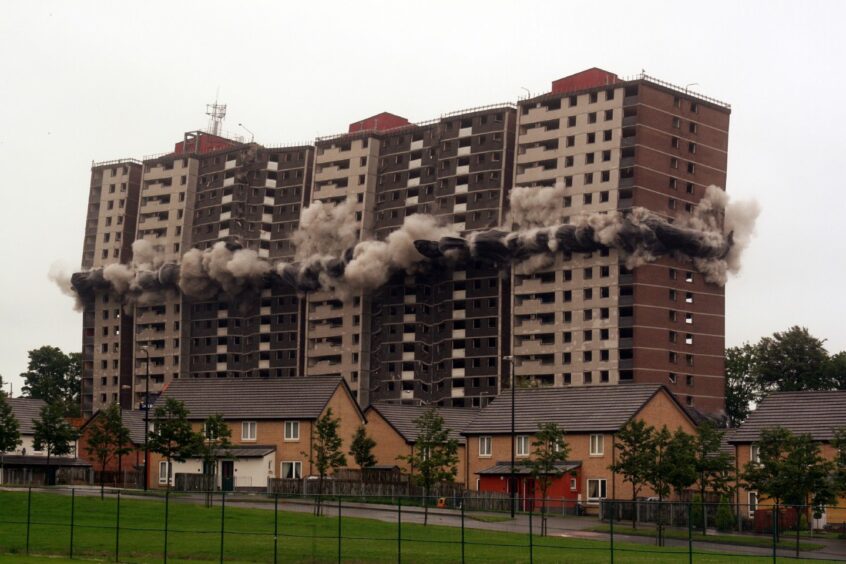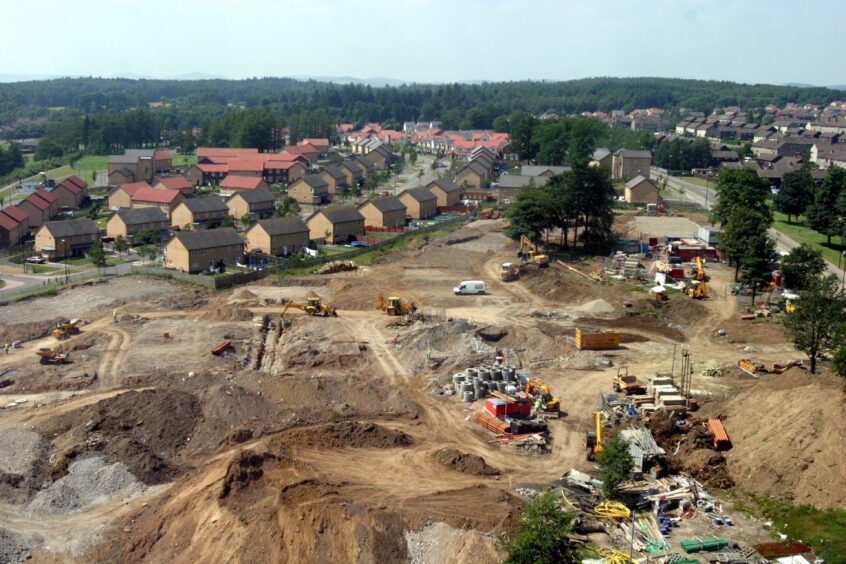The Ardler multis were heralded as “vertical villages” and stood proudly in a line along Birkdale Place.
It was as though a small part of old Dundee was turning into Manhattan.
They were built between 1964 and 1967 and people would take the bus to Ardler to watch these amazing buildings begin reaching for the sky.
For thousands of people the Ardler multis were a happy home for decades.
People were born in them, played around them as children, and went off to work at NCR or Timex or elsewhere in the city from them.
They saw parties and wakes, Christmas mornings and long, hot school holidays, before the vandals left them graffiti-scarred and they were condemned.
Demolition began on the Ardler multis in 1995, before the final block was reduced to 30,000 tons of rubble in 2007.
How did the high-rise dream turn to dust?
People were going to live in the sky
Ardler Estate was one of the most visually striking of Dundee Corporation’s schemes with six 17-storey slab blocks comprising 1,788 dwellings.
The scheme also included avant-garde groups of single-storeyed “patio houses”.
The Ardler multis were once modern, new and exciting.
People were going to live in the sky.
The “Zeilenbau” slab blocks were located on land previously owned by Downfield golf course, which moved further up the road.
Each of the six multis had three court blocks, which were named after golf courses and in alphabetical order — apart from Gullane, which had been given the wrong spot in the running order.
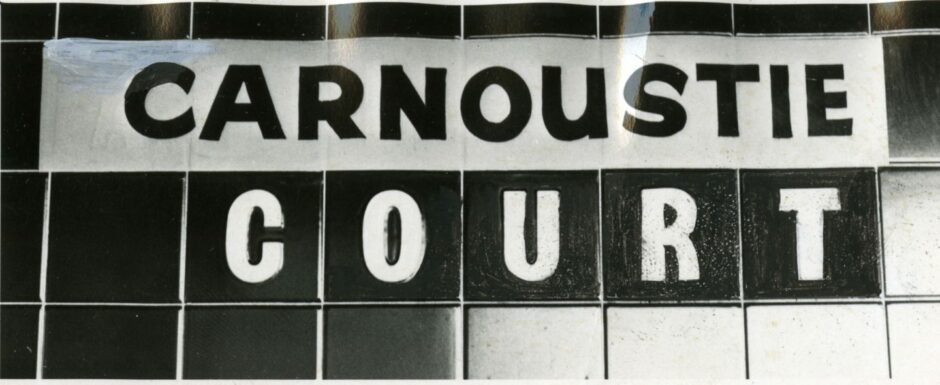
Ardler’s 18 courts were Baberton, Barassie, Carnoustie, Cawdor, Downfield, Edzell, Ganton, Gullane, Gleneagles, Hazlehead, Hoylake, Lindrick, Murcar, Pannal, Prestwick, Scotscraig, Troon and Wentworth.
Each floor had six flats – four family and two single – which were fitted with up-to-date amenities and large, well-designed rooms.
Each flat had a drying cupboard and there was a chute that took rubbish swiftly down to the bins and even garages for the lucky few with cars.
Mums would go down to sit on the grass and watch their children play in the park and little fort that had been created for them.
It was a spacious, safe environment before things started to go downhill in the 1980s.
Anti-social behaviour began to fester and multiply like a contagious disease.
Drug problems and Ardler multis
The quality of life started to dip further in the early 1990s.
Any community suffers from some low-level crime – but the drug problem was on a different level.
People were finding needles down where the children played and some nights residents couldn’t sleep because people were coming to the block to buy drugs.
For many years there was no security on the blocks, which led to crime and vandalism and 190 flats were empty by 1992, which was approximately 10% of dwellings.
Key areas of discontent identified in a survey of tenants were lift breakdown (27%), unclean stairs (25%), vandalism (18%), bad neighbours (12%) and lack of security (9%).
Latterly, the reputation of these multis had fallen and some people were refusing to be housed there despite the fact that many more people lived happily in the scheme.
Local historian Norman Watson says: “By the summer of 1980, 55 multi-storey blocks towered over the city, providing 5,087 homes for a population equivalent to a town the size of Forfar.
“By then, though, planners and public had agreed that decanting householders from inner-city tenements into brutalist blocks did not necessarily solve housing inadequacies.
“The policy was further contradicted by experience as social malaise turned many of the new schemes into near-ghettos.
“Physical appearance deteriorated, back gardens resembled refuse dumps, front areas were overgrown with weeds and dirty stairways daubed with graffiti.
“People’s aspirations also changed. Life had moved on – the desire to be detached had arrived.”
Dundee District Council’s housing committee decided in 1994 to demolish four of the six blocks in Ardler because of lack of letting demand and high repair costs.
Major improvements were carried out to the remaining two blocks of Baberton, Barassie and Carnoustie Courts and Cawdor, Downfield and Edzell Courts.
These included the introduction of concierge services to improve security, new windows, roughcast repairs and environmental improvements.
This did little to improve matters.
Time was running out.
One family refused to move
Scotscraig, Troon and Wentworth Courts were the first to be demolished, although the target date of November 20 1994 wasn’t met due to a ‘sit-in’ protest.
The council abandoned its original schedule when one family rejected offers of alternative accommodation and stayed put in their sixth-floor flat in Scotscraig Court.
The demolition eventually took place in June 1995 following legal action, after 2,970 holes were drilled throughout the building and packed with detonation cords.
Most of the others followed from 1996 onwards, before the final block, that housed Barassie, Baberton and Carnoustie courts, was also demolished in June 2007.
The 17-storey building was reduced to about 30,000 tons of rubble in seconds.
The rain held off briefly as the blow-down took place, following warning hooters at 15 minutes and three minutes before, with a final one just 30 seconds in advance to scare off birds.
The spectacular blast from almost 40kg of explosives was over in the blink of an eye, as dust billowed out from the 200-foot building.
After 15 minutes, the all-clear was given and the bulldozers moved on to the site.
Sanctuary Scotland had planned to demolish the block in 2006 but the determination of the last remaining tenants to stay in their homes instead of being decanted into temporary accommodation held the project back.
The housing association spearheaded the regeneration of Ardler, replacing the multis and low-demand council housing with a range of homes in the new Ardler Village.
All six Ardler multis were now gone, as the blast wiped out forever the landmarks which dominated Dundee’s northern skyline from the 1960s.
The site of that last multi was used for the final new homes in Ardler Village.
Writer and commentator Gerry Hassan lived with his parents for 13 years on the 13th floor of Edzell Court while his grandmother also stayed in the multis.
“The views from the 13th floor were stunning,” he said.
“You could watch advancing storm clouds from miles away get closer as they passed over the Carse of Gowrie and Invergowrie Bay.
“On a clear night from our kitchen window you could see the shimmering lights of Edinburgh.
“During the blackouts of the miners’ strikes of 1972 and 1974 you could watch the areas being shut down moving through the city and coming closer, giving extra time to prepare for the electricity blackout.”
He said the slow accumulation of public spending cuts began to have an effect on the estate in the late 1970s, followed by NCR downsizing and bitter strikes at Timex.
Gerry left Ardler in 1981, before the storm clouds were gathering, but was there 15 years ago when the final block came down and took home a special souvenir.
“The tower blocks which had been such beacons of dynamism and hope became difficult to let, and eventually the decision was made to start pulling down the six tower blocks, the last coming down in 2007.
“The weekend after this I sneaked on to the demolition site and took three bricks from the last tower – the one my granny had lived in.”
They proudly sat in Gerry’s garden for many years.
More like this:
Dundee housing estates: Photographic memories of Fintry
Carolina Port: When chimney stacks that dominated Dundee came tumbling down
